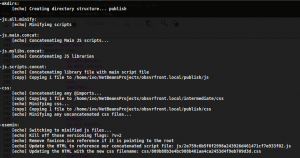Some news from the Superleansilexplate:
- v3 now uses symfony3 components
Silex 1.3 supports symfony3 so lets use it :)
Note: as symfony3 doesnt support php5.4 anymore, we dont either! - new ConsoleServiceProvider
the one from knplabs that was used before seems to be unmaintained and wasnt matching the dependencies anymore.
So i decided to take it over and renew it a bit. Check it out! - Docker support
I started to use Docker as dev enviroment for my projects, so i added dev & prod Docker support.
For the sake of simplicity it uses a single container with Apache and PHP7.
If you have Docker and docker-compose on your machine just spin it up withdocker-compose upand check on localhost:8088.
